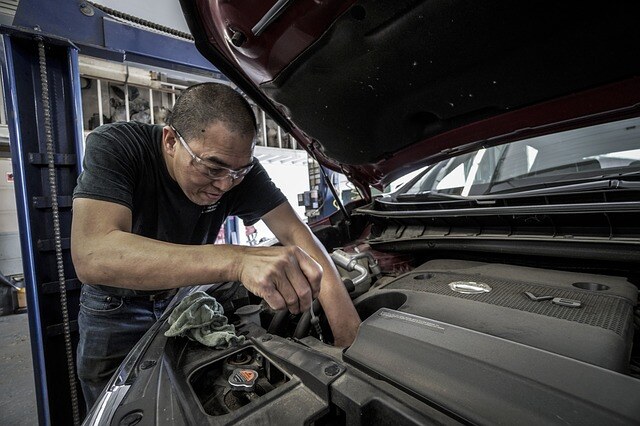Ways To Measure Your Technicians’ Performance

Are your technicians completing jobs in a timely manner, and getting through work orders as expected? It’s essential to measure their performances to determine their overall productivity and to identify potential training needs.
Take a look at various ways you can measure your techs’ job performances.
Job Standards
Measuring tech performance starts before a single wrench is turned. Tech performance begins with the fleet manager who must create clear definitions on what constitutes a repair job. According to Harvard professor and jobs theorist Clayton M. Christensen, “When we buy a product [or service], we essentially 'hire' something [tech] to get a job done. If it does the job well, when we are confronted with the same job, we hire that same product [service] again. And if the product [service] does a crummy job, we 'fire' it and look around for something else we might hire to solve the problem.” Fleet managers are responsible for defining the process involved to complete each job. In Christensen’s best-selling book, “Competing Against Luck”, a process is a systematic sequencing of actions to complete a task reliably. Further, processes include interactions, coordination, communications, and decision-making.
To measure accurate performance, each repair must be broken down by a single job using industry Vehicle Maintenance Reporting Standards (VMRS). Using VMRS allows fleet managers to assign work to techs at an individual job level. Thinking of every task as a job is a useful starting point to measure your tech performance. For example, assigning a job to a tech to replace the front disc brake pads on a 2021 Ford F150 translates into VMRS code 013-001-029. Then, using a Standard Repair Time (SRT) tool allows the

shop to attach time parameters to each assigned job (Figure 1). Thus, measuring actual tech job completion against the expected time standards allows fleet managers to assess performance.
In Figure 1, fleet managers can leverage a high, low, and average SRT for each job assigned to a tech. Typically, the average time equates to a successful job completion time for most techs versus high for experienced and low for inexperienced techs. A good benchmark when measuring tech performance to SRTs ranges between 90-110% of the allocated job time. Many commercial shops refer to SRT compliance as ‘flat rate’ and pay techs by adherence to these time standards. Although most government operations don’t employ ‘flat rate’ pay standards, they can utilize SRTs to successfully measure tech performance to time standards.
Direct Labor
A companion metric to SRTs is the VMRS ‘Direct and Indirect’ labor standards. VMRS codes define jobs as either ‘direct’ (wrench-turning) or ‘indirect’ (non-wrench-turning) and afford fleet managers the opportunity to determine which portion of a tech’s day maximizes a tech’s repair skills and experience to repair a vehicle. Employing VMRS also allows fleet managers to assign ‘indirect’ jobs (e.g., shop cleaning, shuttling, fueling, etc.) to lesser skilled and less costly employees. The primary goal of any shop is to maximize direct labor for skilled techs. A good benchmark for a direct labor target ranges between 65-75% of the tech’s 2,080 total annual hours (1,352-1,560 hours annually).
Additionally, tech performance can be further increased by employing the following policies, procedures, processes, and techniques in the shop operation:
- Establish clear policies and procedures defining repair job processes (e.g., PM manuals, Desktop work instructions, tool allowances, etc.),
- Require techs to possess a standard set of hand tools necessary to repair vehicles,
- Purchase specialty shop and diagnostic tools necessary to optimize tech repair jobs,
- Take advantage of SRT standards in your Fleet Management Information System,
- Routinely conduct skill assessments for techs and train to weaknesses identified,
- Separate preventive maintenance (PM) inspection jobs from corrective repair jobs,
- Conduct periodic Vehicle Unit Analysis (VEU) to assess shop size, rates, tech counts, etc.,
- Use VMRS and 3-C (Complain, Cause, Correction) job standards on work orders,
- Hire a ‘Service Writer’ for large shop operations to triage and assign work by tech skill levels,
- Make use of a ‘shop scheduling’ tool to assign work to techs to maximize daily productivity,
- Utilize ‘5-S’ principles to optimally arrange the tech workspace for safety and productivity,
- Create dedicated PM bays with mirrors, pits, and shelves with staged parts kits nearby,
- Design and employ a Quality Control Inspection (QCI) random cadence to verify job quality,
- Take advantage of operational excellence tools like Six-Sigma and Lean Management to conduct assessments to improve routine repair jobs.
Tech performance is a never-ending improvement project for fleet management professionals operating internal repair facilities. It must be a primary focus to remain competitive in today’s complex environment. Moreover, even those operations who choose to outsource their repair jobs can successfully utilize SRT standards to verify and validate vendor invoices for labor time billed. Validating vendors for the jobs their techs perform on a fleet manager’s behalf is just as important as employing your own techs to complete a job. Whether internal or external, fleet managers are assessed a cost for completed jobs, and understanding these job costs is paramount to the overall success of any operation.
To learn how RTA’s industry-leading software can help keep your technicians and shop more productive, sign up for a demo with our Sales reps.
About the Author: Steve Saltzgiver is the Director of Strategic Innovation at RTA. His primary role is to help RTA make fleets successful. Steve is a long-time veteran of fleet management, having directed two large corporate fleets of over 50,000 assets with budgets exceeding $1 billion annually, and two large state fleets. He has been recognized as a fleet management expert and consultant. Currently, Steve is a member of the RTA Executive Leadership Team directly oversees the Product Management Group and helps lead organizational strategy. The RTA Product Management group’s primary responsibility is to create leading-edge products and services to aid fleets with a winning strategy to become successful.
